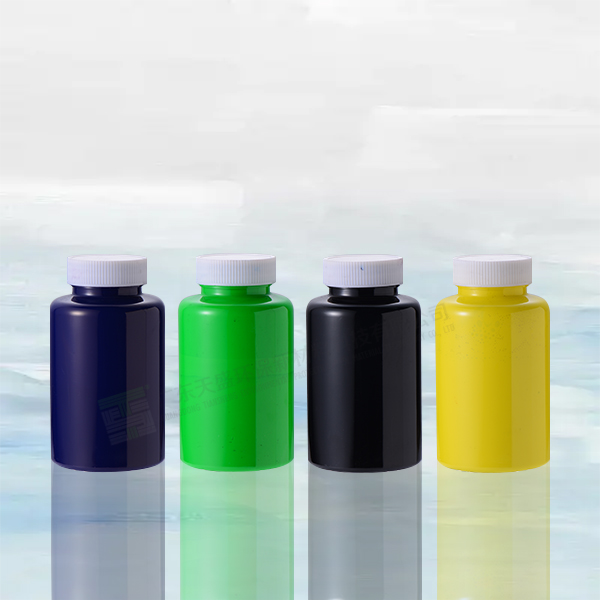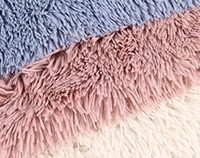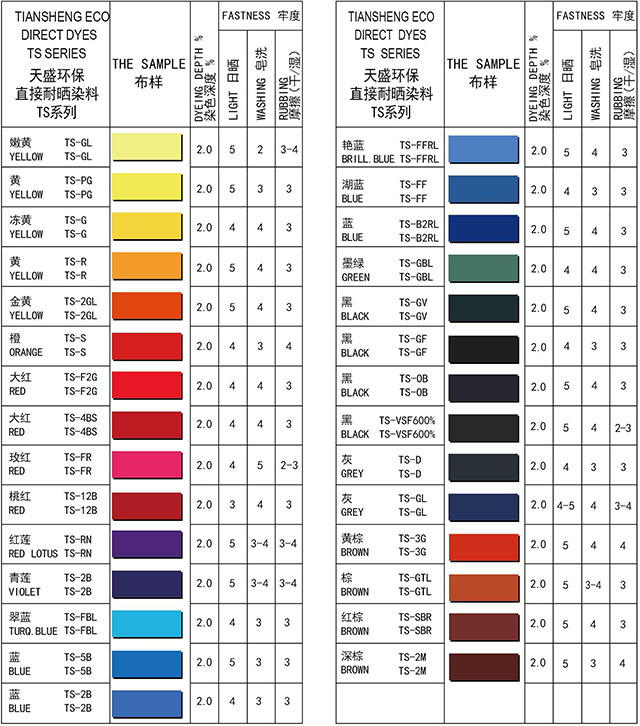Usage method
Dip dyeing is a method of immersing a dye in a dye solution and gradually absorbing the dye into the fibers through a certain dyeing process to achieve the dyeing goal. The specific operation is as follows:
Dip dyeing of cotton hank yarn
The use of environmentally friendly direct dyes for dyeing cotton hank yarn has gradually decreased since the application of dyes with good dyeing fastness, such as reduction, insoluble azo, and sulfide. However, certain colors (such as black) still maintain the advantages of environmentally friendly direct dyes. In addition, due to the low requirements for color fastness of certain dyeing products, and the simpler dyeing method of environmentally friendly direct dyes, the cost becomes lower. Therefore, in some cases, environmentally friendly direct dyes are also used for yarn soaking
Dip dyeing of viscose strands
Process flow: yarn preparation → dyeing → washing → dehydration → fixation → oiling → dehydration → drying
Dipping and dyeing of mulberry twisted silk
Process flow: skein refining → water washing → dyeing → water washing → dehydration → fixation → water washing → oiling → dehydration → drying
Dip dyeing of cotton knitted fabrics
Process flow: grey fabric preparation → dyeing → water washing → paraffin treatment → dehydration → drying
Dip dyeing of wool and viscose blended fabrics
There are two methods for dyeing wool viscose blended fabrics with environmentally friendly direct dyes. One is to use dyes that can dye wool and viscose to the same color. Another method is to use environmentally friendly direct dyes to dye the wool fabric with viscose, leaving the wool white; Alternatively, wool can be dyed with acidic dyes first, followed by eco-friendly direct dyes to achieve a dual color effect
Packaging and storage
50kg/barrel, lined with plastic bags for packaging
Store tightly at room temperature





